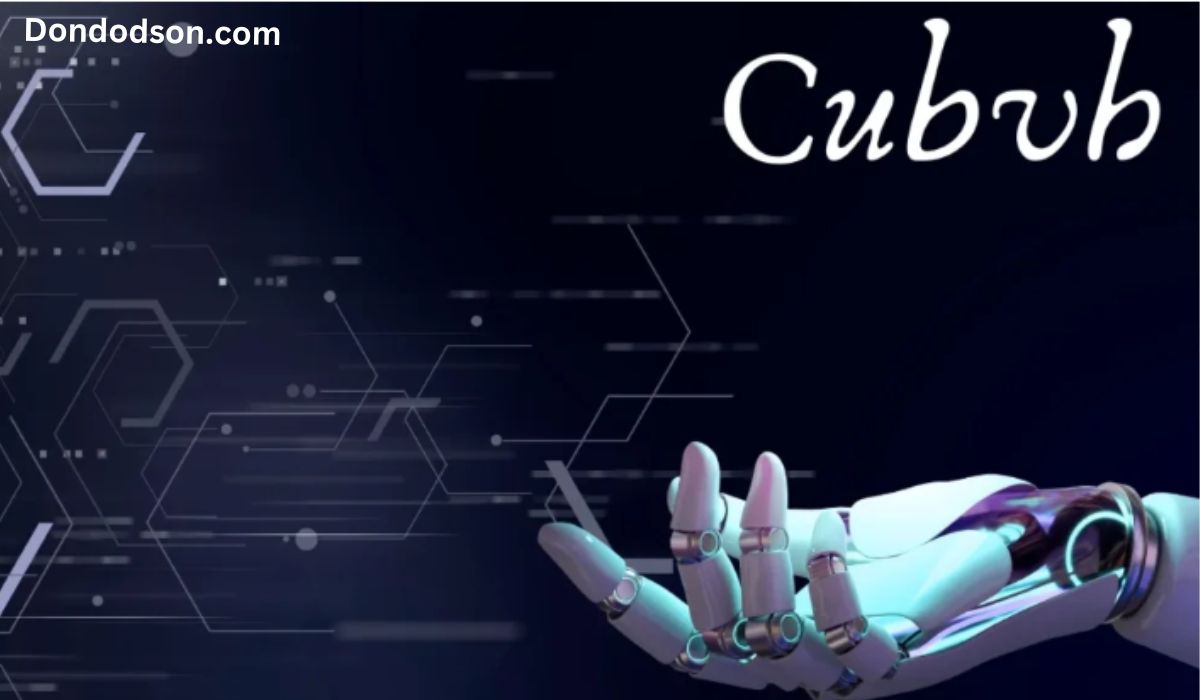Introduction
CUBVH is an advanced CUDA-based toolkit designed for accelerating Bounding Volume Hierarchies (BVHs) in computer graphics. BVHs are essential in rendering and collision detection processes, particularly in ray tracing, where efficient algorithms are crucial for achieving high performance. CUBVH leverages the power of CUDA to provide GPU-accelerated BVH operations, offering significant speedups and memory efficiency.
The purpose of this article is to provide a detailed guide to CUBVH, exploring its features, applications, and how it compares to other BVH libraries. Whether you’re a developer looking to integrate BVH acceleration into your projects or simply curious about cutting-edge graphics technologies, this guide will provide valuable insights into the capabilities of CUBVH.
Understanding BVHs
What are BVHs?
Bounding Volume Hierarchies (BVHs) are tree structures used in computer graphics to organize geometric objects. Each node in a BVH represents a bounding volume that encapsulates a subset of objects or other bounding volumes. The primary purpose of BVHs is to reduce the number of intersection tests required during rendering or collision detection. By quickly eliminating objects that do not intersect with a given ray or object, BVHs significantly improve computational efficiency.
BVH Construction and Traversal
Constructing a BVH involves recursively dividing a set of objects into smaller subsets and creating bounding volumes that encapsulate each subset. The most common BVH construction methods include:
- Top-down construction: Starts with a single bounding volume that encapsulates all objects and recursively splits the set into smaller volumes.
- Bottom-up construction: Begins with individual objects as leaf nodes and merges them into larger bounding volumes.
- Hybrid methods: Combine elements of both top-down and bottom-up approaches for optimal performance.
Once a BVH is constructed, traversal algorithms are used to determine which objects a ray intersects. These algorithms efficiently navigate the BVH tree, quickly discarding non-intersecting volumes and focusing on potential collisions.
CUBVH’s Core Features
CUDA Acceleration
CUBVH stands out for its utilization of CUDA, NVIDIA’s parallel computing platform, to accelerate BVH operations on GPUs. By offloading BVH construction and traversal to the GPU, CUBVH achieves remarkable performance improvements over traditional CPU-based methods. This acceleration is particularly beneficial in real-time rendering and complex scenes where the computational load is high.
BVH Construction Methods
CUBVH supports various BVH construction algorithms, allowing developers to choose the method that best suits their needs. Whether you require fast construction times for dynamic scenes or optimized hierarchies for static scenes, CUBVH provides flexible options. Some of the supported methods include:
- Linear BVH (LBVH): Focuses on fast construction times, ideal for dynamic scenes.
- Hierarchical BVH (HBVH): Balances construction speed and traversal efficiency.
- Compressed BVH (CBVH): Reduces memory usage by compressing the BVH structure.
Intersection Tests
One of CUBVH’s key capabilities is performing ray-triangle and ray-primitive intersection tests. These tests are critical in ray tracing algorithms, where accurate and efficient intersection detection directly impacts rendering quality and speed. CUBVH’s implementation of these tests is optimized for CUDA, ensuring minimal latency and high throughput.
CUBVH’s Performance Advantages
Speedup
CUBVH offers significant speedups compared to CPU-based BVH implementations. By harnessing the parallel processing power of GPUs, CUBVH can handle large datasets and complex scenes with ease. In some cases, speed improvements of up to 10x have been reported, making CUBVH a compelling choice for performance-critical applications.
Scalability
Scalability is a key strength of CUBVH. The toolkit is designed to handle large and complex scenes efficiently, making it suitable for a wide range of applications, from video games to scientific simulations. As the complexity of a scene increases, CUBVH scales gracefully, maintaining high performance without sacrificing accuracy.
Memory Efficiency
Memory optimization is another area where CUBVH excels. By employing advanced memory management techniques, CUBVH minimizes the memory footprint of BVHs, allowing more complex scenes to fit within the limited memory of GPUs. This efficiency is particularly important in applications where memory is a limiting factor.
CUBVH’s Applications
Ray Tracing
Ray tracing is a rendering technique that simulates the way light interacts with objects to produce realistic images. CUBVH plays a crucial role in ray tracing by accelerating the BVH construction and traversal processes, enabling real-time ray tracing in complex scenes. This capability is increasingly important in modern graphics, where realism is paramount.
Global Illumination
Global illumination techniques, such as radiosity and photon mapping, simulate the way light bounces off surfaces to create realistic lighting effects. CUBVH’s ability to efficiently handle BVHs makes it an ideal tool for these techniques, providing the computational power needed to achieve high-quality results.
Collision Detection
In physics simulations and video games, collision detection is essential for ensuring that objects interact realistically. CUBVH’s BVH acceleration capabilities enhance collision detection algorithms, allowing for real-time interaction in complex environments. This is particularly valuable in simulations involving large numbers of objects.
Using CUBVH in Your Projects
Integration with CUDA
Integrating CUBVH into existing CUDA projects is straightforward, thanks to its well-documented API and compatibility with standard CUDA workflows. Developers can quickly incorporate CUBVH into their rendering pipelines or simulation frameworks, taking advantage of its performance benefits without significant overhead.
API and Usage
CUBVH’s API is designed with usability in mind, offering a range of functions for BVH construction, traversal, and intersection testing. Developers can easily access these functions through simple API calls, making it easy to implement BVH acceleration in a variety of use cases. Code examples are provided in the documentation, demonstrating how to use CUBVH in common scenarios.
Best Practices
To maximize the performance of CUBVH, it’s important to follow best practices when integrating it into your projects. Some tips include:
- Optimize data structures: Ensure that your data structures are compatible with CUDA and optimized for GPU processing.
- Minimize data transfers: Reduce the amount of data transferred between the CPU and GPU to minimize latency.
- Leverage parallelism: Take full advantage of CUDA’s parallel processing capabilities to accelerate BVH operations.
CUBVH vs. Other BVH Libraries
Comparison with Competitors
When compared to other popular BVH libraries, such as Embree and BVH4, CUBVH offers distinct advantages. While Embree is known for its CPU-based performance, CUBVH excels in GPU acceleration, making it a better choice for applications that require real-time performance. BVH4, on the other hand, focuses on memory efficiency, but CUBVH provides a more balanced approach with both speed and memory optimization.
Unique Features
CUBVH’s unique features, such as its CUDA acceleration and support for multiple BVH construction methods, set it apart from other libraries. These features make CUBVH a versatile tool that can be adapted to a wide range of applications, from real-time rendering to scientific simulations.
CUBVH’s Future and Development
Roadmap
The future of CUBVH looks promising, with ongoing development focused on enhancing its performance and expanding its feature set. Planned improvements include support for new BVH construction algorithms, further optimization of memory usage, and integration with emerging GPU technologies.
Community and Support
It benefits from a growing community of users and developers who contribute to its development and provide support to new users. Online forums, documentation, and tutorials are available to help users get the most out of CUBVH. Additionally, the development team is responsive to feedback and regularly releases updates based on user input.
You May Also Like: Alaya AI: Pioneering the Future of Artificial Intelligence
Conclusion
CUBVH is a powerful toolkit that brings the benefits of CUDA acceleration to BVH operations, offering significant performance advantages in ray tracing, global illumination, and collision detection. With its flexible API, robust feature set, and strong community support, CUBVH is an excellent choice for developers looking to optimize their graphics applications. Whether you’re working on a video game, a scientific simulation, or a real-time rendering engine, CUBVH provides the tools you need to achieve high performance and realism.
FAQs
1. What is CUBVH?
CUBVH is a CUDA-based toolkit designed for accelerating Bounding Volume Hierarchies (BVHs) in computer graphics applications, such as ray tracing and collision detection.
2. How does CUBVH improve performance?
CUBVH leverages GPU acceleration through CUDA to significantly speed up BVH construction and traversal, offering substantial performance gains compared to CPU-based methods.
3. Can CUBVH be integrated into existing projects?
Yes, CUBVH can be easily integrated into existing CUDA projects, with a well-documented API that simplifies the process.
4. What are some applications of CUBVH?
CUBVH is commonly used in ray tracing, global illumination, and collision detection, where it enhances performance and enables real-time processing in complex scenes.
5. How does CUBVH compare to other BVH libraries?
CUBVH stands out for its GPU acceleration and memory efficiency, offering advantages over other BVH libraries like Embree (CPU-focused) and BVH4 (memory optimization).











